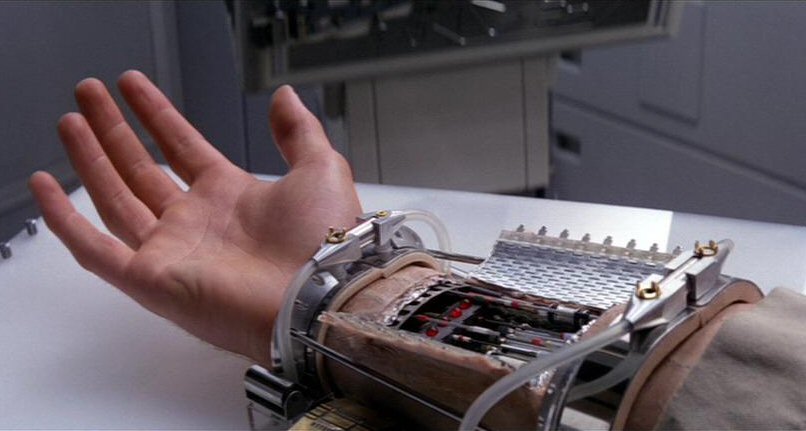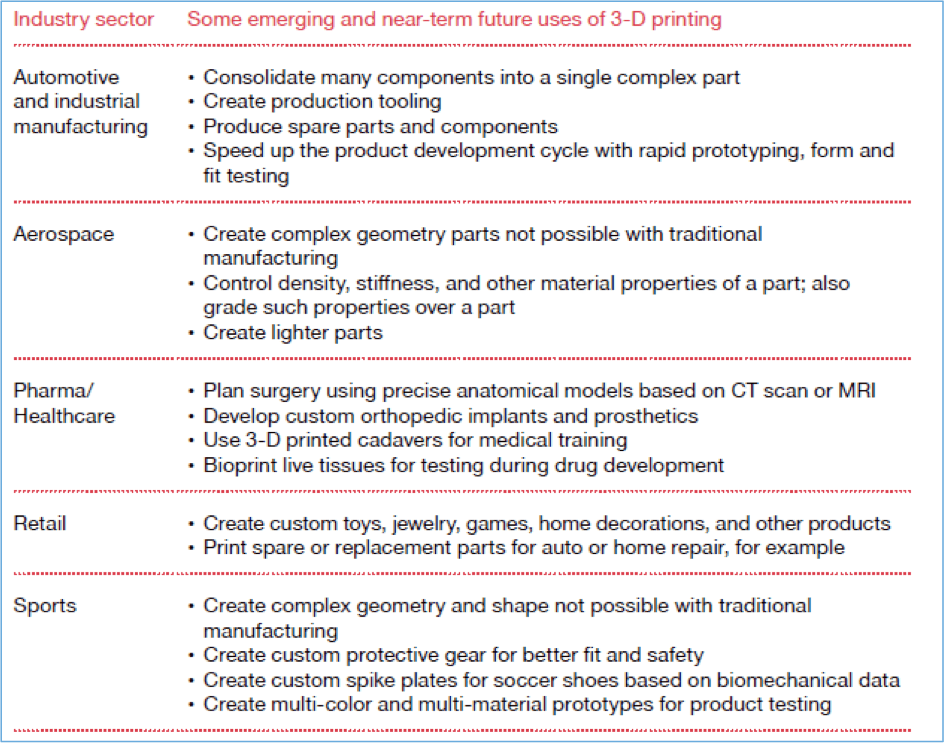
By Chris at www.CapitalistExploits.at
"Watch out buddy. I'll print another one of you."
My son was being a little snot. The thing with your own kids is that they're like your wife: they absolutely know how to push your buttons and make your blood boil. Between you and me, there are times when I could whop him with a frying pan on the head. I'll not be doing that of course as the frying pan will be dented and I'd have to explain that to my wife.
In all seriousness, while I was joking, the truth is I was only half joking.
Do you remember the scene in The Empire Strikes Back where Luke Skywalker has a team of robots working on repairing his severed hand?
There were robots involved and while there wasn't visible 3D printing shown, there was synthetic skin produced.
Today printing tissue and bones is with us.
A 3D bio-printer can now produce full sized bone and muscle tissues.
Bioprinting is one of the fastest growing areas of 3D printing:
"Researchers from the Wake Forest Institute for Regenerative Medicine detailed how they managed to create a 3D bio-printer that is precise enough to actually manufacture replacement tissue capable of being used in transplant surgery.
Body parts printed thus far include a jaw bone, muscle tissue, and cartilage structures, and perhaps most impressive of all, an incredibly accurate human ear."
Every day takes us one step closer to the day when we will be able to print customized body parts when we break down.
And it's not only in healthcare that 3D printing is rapidly accelerating:

Source: PricewaterhouseCoopers
3D printing has been around since the 80's but it was 2009 which was a critical year for this technology.
A key patent expired then and this allowed numerous industry players to enter the market. Obviously, by 2009 the internet had become the norm; computing power had increased by orders of magnitude and collapsed to a fraction of the cost, and the consumer had become more technology-aware than ever before.
Since then, the 3D printing industry has enjoyed tremendous growth as a wide range of users have been adopting the technology.
Initially this technology has largely been used for prototyping due to the relative high cost of the machines. The declining price of the systems means that we will be seeing a paradigm shift in product development cycles.
Think about the ability to print single order runs of any product, to market test the product, redesign, reshape and reprint without the need for massive enterprise scale production.
When you think through what that world looks like you'll see that the entire design cycle changes.
A recent McKinsey report explains this well:
“As of 2011, only about 25 percent of the additive-manufacturing market involved the direct manufacture of end products. With a 60 percent annual growth rate, however, that is the industry’s fastest-growing segment.
As costs continue to fall and the capabilities of 3D printers increase, the range of parts that can be economically manufactured using additive techniques will broaden dramatically.”
1. Everything Becomes Customized
Greater value can be built into each product with far less additional cost attributed. This means that print on demand, customizable products will begin to be more prevalent and ultimately become the norm. This is already taking place and expect it to accelerate as costs continue to fall.
2. Makers Become Manufacturers
This distinction seems inevitable to me. Those who designed designed, and those who manufactured manufactured. The industrial revolution allowed for (and encouraged) specialization since automation of standardized products was where the scale existed.
That barrier is falling fast. Today an architect or design engineer can both design and manufacture. And as I just mentioned, the manufacturing of product and design can be a more iterative feedback process resulting in superior end products.
3. Cost Cutting and Waste Reduction 3D printing allows for much less wastage - due to the ability to print on demand rather than the usual industrial scale production, the costs are significantly lower and the wastage close to zero.
From the Technology Review:
"GE chose the additive process for manufacturing the nozzles because it uses less material than conventional techniques. That reduces GE's production costs and, because it makes the parts lighter, yields significant fuel savings for airlines. Conventional techniques would require welding about 20 small pieces together, a labor-intensive process in which a high percentage of the material ends up being scrapped. Instead, the part will be built from a bed of cobalt-chromium powder. A computer-controlled laser shoots pinpoint beams onto the bed to melt the metal alloy in the desired areas, creating 20-micrometer-thick layers one by one. The process is a faster way to make complex shapes because the machines can run around the clock. And additive manufacturing in general conserves material because the printer can handle shapes that eliminate unnecessary bulk and create them without the typical waste."
As with any useful technology the economic forces propel it forward in a self reinforcing process whereby, with each additional participant using the technology the cost of the technology falls due to simple laws of economics, and this process brings about ever more applications which can be built out of the original technology.
The world of our future will be one where manufacturing will be completely customized, on demand and at the retail level.
As much as I may on occasion wish to print another version of my son, it is my kids that'll be printing body parts for me in my old age. I look forward to it. Certainly it beats the current alternatives.
I'll dive deeper into 3D printing in my future articles. If you're interested in learning more about 3D printing and other disruptive technologies then make sure not to miss those articles by receiving them straight into your inbox.
- Chris
"Forewarned, forearmed; to be prepared is half the victory." – Miguel de Cervantes
============
Liked this article? Read more from us and get access to
free subscriber only content here.
============